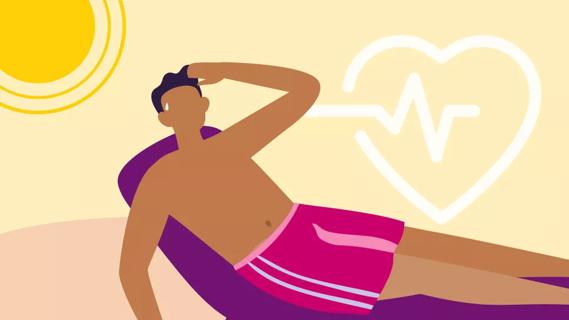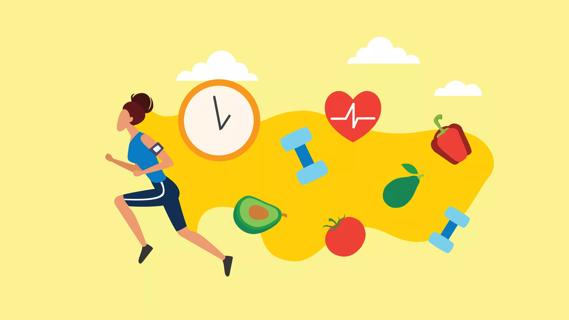Anyone can get heat illness, so watch for signs that you need to cool down

Warm, sunny days are perfect for outdoor exercise. You don’t need a jacket or gloves. You don’t have to worry about slipping on a patch of ice during your morning jog. Just throw on your shoes and go, right?
Advertisement
Cleveland Clinic is a non-profit academic medical center. Advertising on our site helps support our mission. We do not endorse non-Cleveland Clinic products or services. Policy
Careful — sunny days have risks, too. If your body gets too hot, you could get heat illness. In mild cases, you might feel miserable for a few hours. But serious cases can be life-threatening.
Emergency room physician Tom Waters, MD, explains the different types of heat illness, their symptoms and how you can prevent them.
When we’re hot, our bodies sweat to cool us down. But sweating can only do so much. Heat illness happens when your body’s cooling efforts can’t keep up with the temperature and humidity around you.
“Sweating is our main mechanism to dissipate heat. When it’s hot and humid, we’re not very efficient at getting rid of heat,” Dr. Waters explains.
That’s when a heat illness can happen. Your body temperature rises, and you need to take quick action to lower it. Just getting out of the sun and drinking fluids might be enough to make you feel better. But if your symptoms are more severe, go to the emergency room.
Young children and older adults are more susceptible to high heat. They should take frequent breaks from the heat and drink plenty of fluids.
Cramps are the first sign you’re overdoing it in the heat and need to cool down.
If you feel muscle spasms during your workout:
Advertisement
Don’t exercise again for the rest of the day, and make sure you’ve had plenty to drink. If your cramps don’t go away after an hour or you have heart problems, get medical help right away.
Heat exhaustion is more severe than heat cramps. You may have symptoms, such as:
To treat heat exhaustion, get out of the heat and sun ASAP. If possible, go inside an air-conditioned building. Loosen your clothes and drink water or electrolyte drinks. If you have access to a cool bath or wet washcloths, use one or both to get your skin’s temperature down.
If you’re vomiting or symptoms don’t get better within a few minutes, call 911 or head to the emergency room, Dr. Waters says.
Heatstroke is the most severe form of heat illness. This life-threatening condition needs immediate medical attention. If you don’t get treatment, it can lead to brain damage or death.
Symptoms can include:
If you think a person has heatstroke, seek emergency medical care. Get them to a cooler place while you wait for an ambulance. If you’re driving them to an emergency room, use cold compresses and air conditioning to cool them down in the vehicle.
“If you notice a loved one is not acting right — if they’re confused or not themselves — they may be developing heatstroke. Get them out of the heat,” says Dr. Waters. “If they don’t recover quickly after that, or if they continue to act confused, take them to the emergency room right away.”
You don’t have to avoid outdoor workouts when it’s warm. Here’s what you can do to prevent heat illness:
Advertisement
The symptoms of heat exhaustion and heatstroke can be difficult to tell apart. If you’re not sure, don’t try to guess or wait. The safest bet is to head to the emergency room.
Advertisement
Learn more about our editorial process.
Advertisement

Sizzling temperatures force your heart to work much harder

It’s best to exercise before or after your fast, instead of during it

Both heat illnesses can be life-threatening if left untreated

As temperatures increase, so does the need for safety precautions

The flu, RSV, COVID-19, pneumonia and more typically circulate during cold weather months. I added this change

Simple swaps improve a comfort food staple.

Type 2 diabetes isn’t inevitable with these dietary changes

Applying a hot or cold compress can help with pain